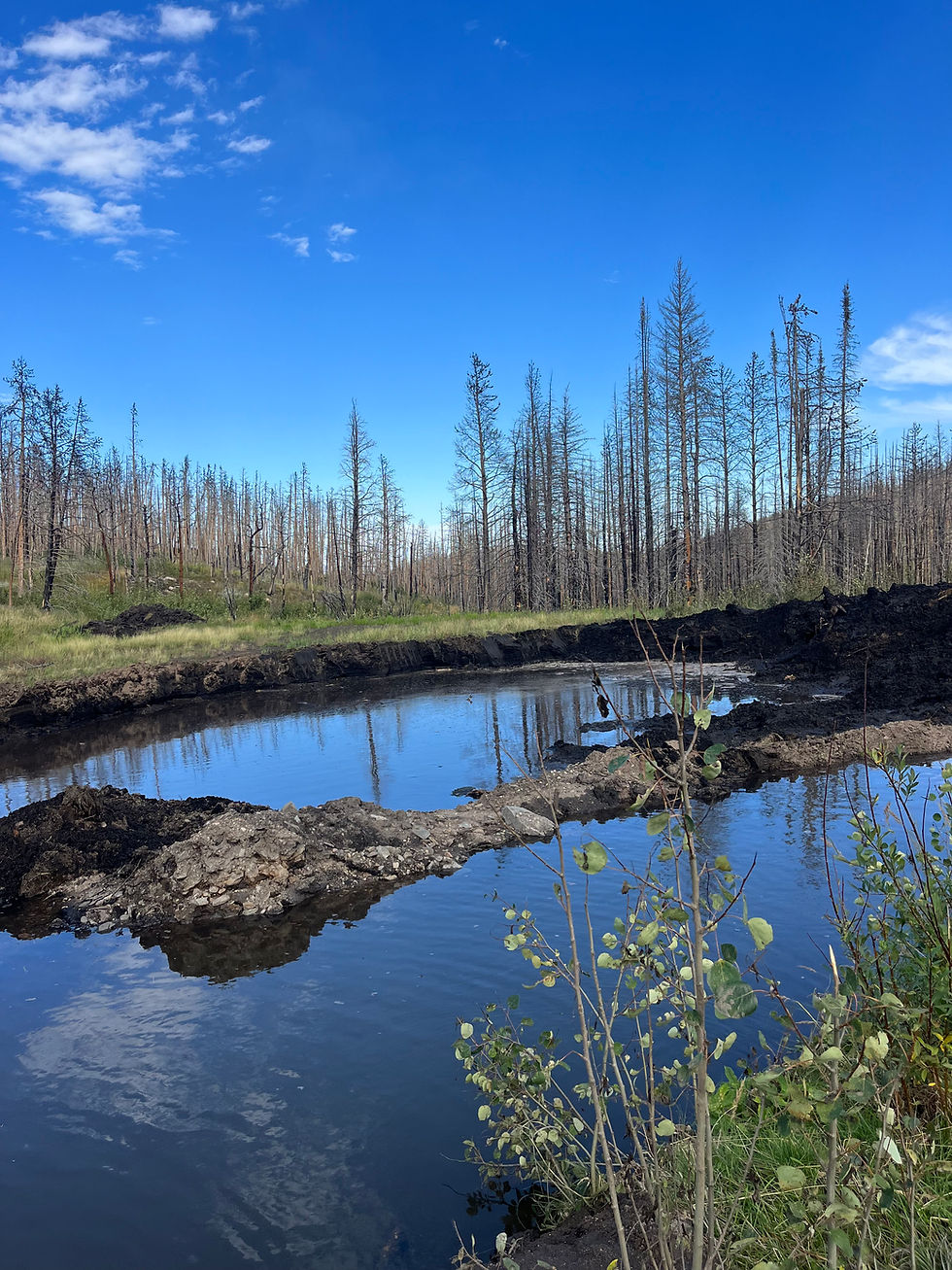Restoring Elk Creek After the Cameron Peak Fire
- AloTerra
- Feb 19
- 3 min read
Updated: Aug 4
In the rugged heart of Colorado’s Front Range, the 2020 Cameron Peak Fire left behind more than just charred trees and blackened hillsides; it deeply altered entire stream systems. For Elk Creek, one of the waterways within the Big Thompson watershed, the fire’s aftermath meant massive sediment movement, stream incision, and a loss of connection between the channel and its historic floodplain. This disconnect meant once-healthy riparian zones became dry, isolated, and less hospitable to aquatic and terrestrial life.

In fall 2023, AloTerra Services launched a restoration effort in this altered landscape, one that not only brought new life to the creek but pushed the boundaries of what the team had previously done in stream restoration.
Starting With a New Playbook
“For this project, we had to step outside of our comfort zone,” said Kieran Clute, Forestry Director at AloTerra. “We were installing structures we had never built before, our first PALS [Post-Assisted Log Structures] and BDA’s [Beaver Dam Analogs].”

While the Cameron Peak burn scar had left its mark in obvious ways, the solutions weren’t as immediately clear. BDAs and PALS are both types of Low-Tech Process-Based Restoration (LTPBR) structures, designed to mimic the ecological work of beavers and natural log jams. These structures are simple in concept but complex in implementation, particularly in terrain shaped by fire and flood.
Transporting large logs to structure locations across rugged terrain, managing crew safety amid a physically demanding environment, and adjusting for unpredictable weather all posed challenges during construction. But perhaps the greatest obstacle was learning in real time—figuring out how to build effective structures using both ecological knowledge and on-the-ground improvisation.
Lessons from the beaver
It didn’t take long for the team to fully embrace their inner beaver.
“Our biggest ‘aha’ moment came while working on the BDAs,” said Clute. “We realized that sod was a game-changer for low-porosity structures. It worked far better than expected and helped us create upstream ponds.”
The team sourced sod and willows from nearby areas scheduled to be inundated and used them to patch leaks in the structures. At times, a designated "beaver boy" would wade into chest-deep pools, feeling for seepage with their hands, plugging holes one by one. It was muddy, cold, and labor-intensive, but it worked.
People, Process, and Place
Though the technical accomplishments were substantial, the restoration also had deep personal and professional impacts. AloTerra’s forestry crew gained not only hands-on experience with LTPBR methods, but also a profound appreciation for adaptability in the face of uncertainty. Several team members grew into new roles as sawyers and post-fire riparian ecologists.
“The collaboration was another huge success factor,” Clute said. “Working side-by-side with engineers from Ayres and Brenan Bloyd from Big Thompson Watershed Coalition, we adjusted our designs on the fly. That level of responsiveness is what makes these projects succeed.”
Long-Term Impact
The restored section of Elk Creek is now reconnected to its floodplain. Water slows down at each structure, soaking into surrounding soils, supporting diverse vegetation, and improving habitat for wildlife. While the ecological outcomes are clear, the unexpected benefits (team growth, technical innovation, and strengthened partnerships) will ripple far beyond this single project.
AloTerra’s work at Big Thompson – Elk Creek/Buckhorn Creek isn’t just about rebuilding what was lost; it’s about redefining how restoration can be done in a post-fire landscape. And sometimes, it means going full beaver to get the job done.





